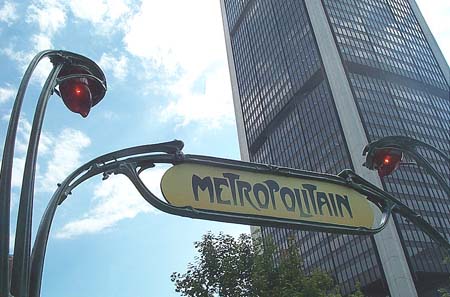
| ARCHITECT |
| Irving Sager |
| ARTISTS |
|
Hector Guimard Robert Savoie Jean-Paul Mousseau |
| OPENING DATE |
| 6 February 1967 |
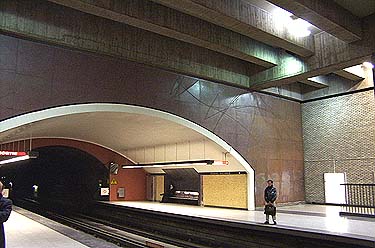 |
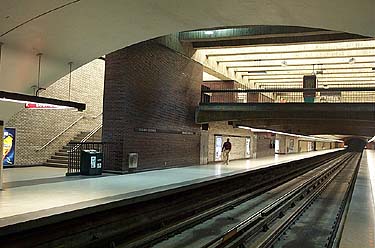 |
The austere International style of interior design, which influenced several network-wide aspects of the metro such as the overhead lights, nameplates, and directional panels, is given its fullest play at this station. The unadorned expanses of walls in the station platforms, corridors, and accesses are exemplary of this style, popular at the time the metro network was inaugurated.

A number of simple wall claddings are used. In the central volume of the platforms and mezzanine, brown and beige glazed bricks are used. Most of the rest of the station, however, including the ends of the platforms and the corridors, are in gold-coloured tiles, recalling that this station serves Montreal's financial district and the Tour de la Bourse stock exchange building.

The station centres around its wide mezzanine, built to accomodate the flood of passengers every day from the surrounding office towers and direct them towards its four wide escalators to the platforms. From the mezzanine, two very long tunnels branch out north and south, leading to entrances spread over four blocks (around 300 metres) from rue Belmont to rue Saint-Jacques.
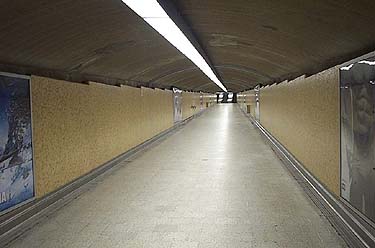 |
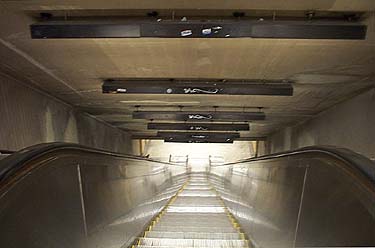 |
The northern tunnel runs two blocks right up Côte du Beaver-Hall to the Belmont exit, climbing the hill by means of two dizzying sets of escalators.
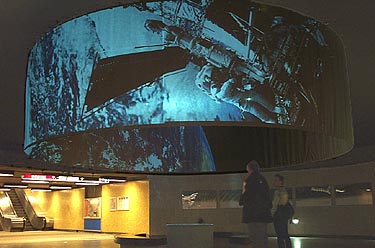 |
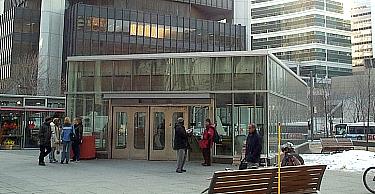
The southern tunnel collects passengers at two points: the Saint-Antoine exit (see below), which also provides underground city access to the new ICAO and CDP Capital buildings through the Underground City; and the Saint-Jacques exit at the southern end.
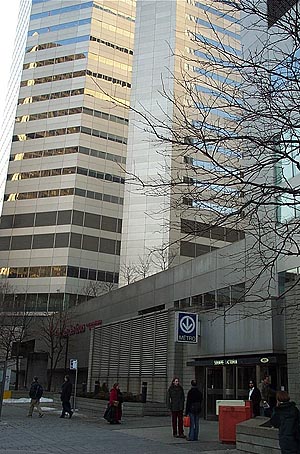 The Saint-Jacques exit has a new glass entrance building added during the renovation of the Quartier International. It enters into a large rotunda with a well-known echo effect at the south end of the tunnel. In addition to the Saint-Jacques exit itself, the rotunda allows access to the Montreal World Trade Centre and the Tour de la Bourse.
The Saint-Jacques exit has a new glass entrance building added during the renovation of the Quartier International. It enters into a large rotunda with a well-known echo effect at the south end of the tunnel. In addition to the Saint-Jacques exit itself, the rotunda allows access to the Montreal World Trade Centre and the Tour de la Bourse.This rotunda was formerly the site of an interactive installation called Ars Natura, installed in March 2004 and consisting of a suspended circular screen onto which are projected panoramic video displays about Montreal's science museums - the Biodôme, Insectarium, Botanical Garden, and Planetarium. These son et lumière displays include live image feed from cameras in the Biodôme. However, this was later removed.
Finally, the staircase towards the Viger exit, allowing access to the Bell and Banque Nationale towers, is right next to the mezzanine in the centre of the station.
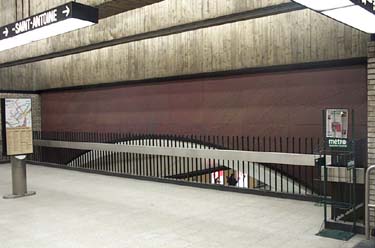 |
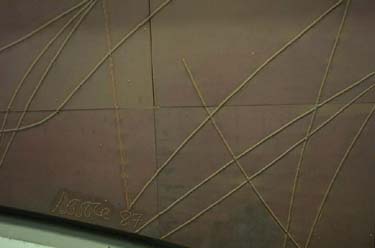 |
The station's mezzanine is enhanced by a discreet but sizeable work of art, a pair of murals in brown Cor-Ten steel by Robert Savoie. The larger of the two murals (depicted on the top of the page) is on the western wall of the volume over the platform vault, and the other is on the eastern wall of the volume, separated from the mezzanine by only a narrow overlook. Entitled Kawari Kabuto (a Japanese term referring to a highly ornate samurai helmet), the murals are patterned with fluid designs of raised ridges.
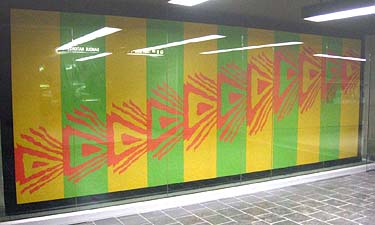 Another work of art is located inside the station, namely a mural by Jean-Paul Mousseau. Located in the north hallway, this brightly-coloured mural serves as a directional indicator for passengers entering through the Belmont and Viger entrances.
Another work of art is located inside the station, namely a mural by Jean-Paul Mousseau. Located in the north hallway, this brightly-coloured mural serves as a directional indicator for passengers entering through the Belmont and Viger entrances.

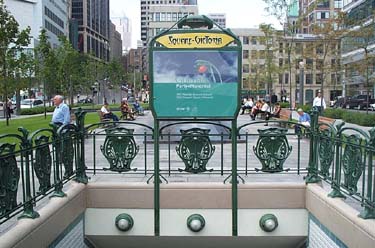 |
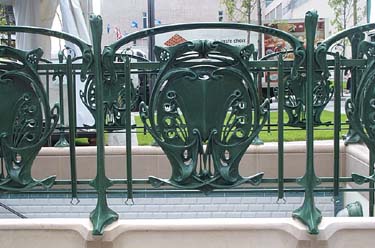 |
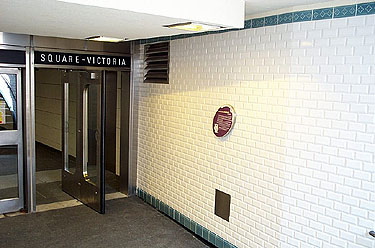
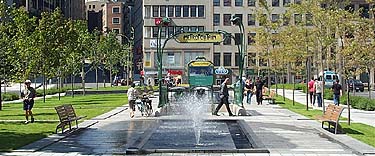
But the station's pride, and a crown jewel of the Montreal metro's art collection, is its authentic fin de siècle Art Nouveau Parisian metro entrance that graces the St-Antoine exit in square Victoria. This example of French architect Hector Guimard's famous work was donated by that city to the people of Montreal in 1967 to commemorate the cooperation between French and Canadian engineers in creating the metro. It is the only authentic Guimard entrance in use on a metro station, anywhere in the world outside Paris.
Guimard's cast-iron metro entrances are known worldwide. With their sinuous plant-like forms and amber lamps like serpent's eyes, they are justly regarded as an important example of the Art Nouveau style of the turn of the century. Some are preserved in museums such as the Museum of Modern Art in New York.
Since its restoration and reinauguration in September 2003 as part of the Quartier International development project (find out more), Montreal's Guimard entrance is one of the finest in the world. This pride of the Montreal metro is worth a trip all to itself.
| ||